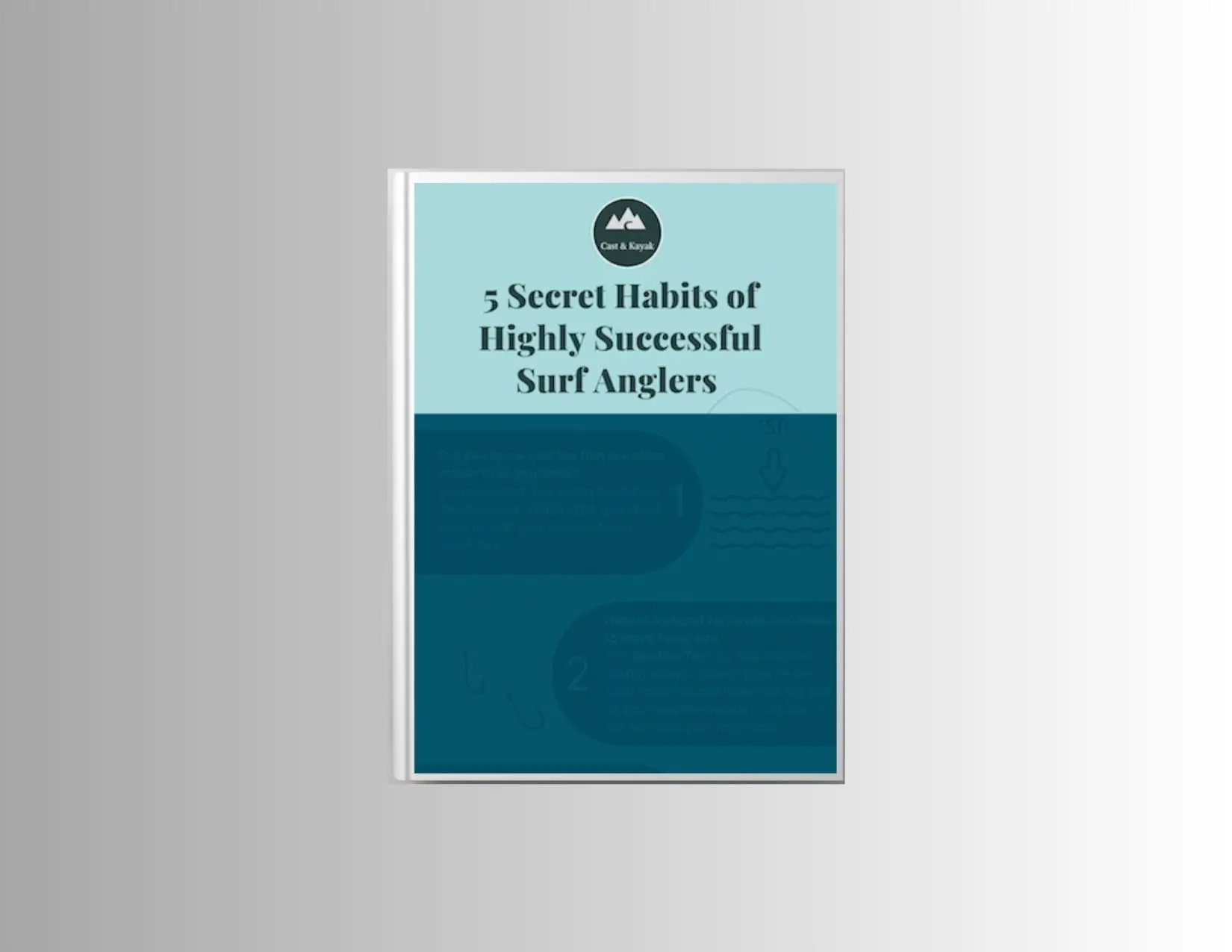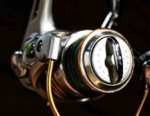Entering the world of surf fishing for the first time can be daunting.
Whether you’re a pure novice to fishing, or this is just new territory for you as a seasoned angler, there are some different considerations you need to take in to get the right gear.
When selecting a fishing rod, a question that comes up commonly is what action rod is the best for surf fishing?
Check out our view of the best surf rods for beginners here.
This is a question to get right, and one I had to do comprehensive research to properly answer for myself too.
This article tells you everything you need to know about choosing the right rod action for surf fishing.
When surf fishing, the best action for lure fishing, or targeting smaller species closer to shore is a faster action, which provides more accuracy and sensitivity to feel bites and set hook. Slower action rods are best for casting longer distances, where the additional flex of the rod provides more energy to cast further.
Click to find out our view on the best-performing surf reels out this year.
Alternatively, if you need more information on how heavy a surf rod needs to be, click here.
- Simple habits to hook up more fish
- Quick and easy to implement on your next fishing trip
- Don't pay any more money on gear.
Just ENTER YOUR EMAIL ADDRESS BELOW, and get the FREE resource, NOW!
Rod action: explained
Rod action is an important metric for choosing the right type of surf rod.
A rod’s ‘action’ refers to how the rod bends and flexes, where it flexes, and how quickly it goes back to being straight after having been bent under load.
So if you have a ‘fast action’ rod, when you bend it, you should notice two key things.
- The rod bends close to the end eyelet of the blank and doesn’t flex particularly far.
- When the rod is released from any load it was under, it returns to being ‘straight’ very quickly.
And conversely, if you have a slow action rod, you’ll notice two differences compared to a fast action rod:
- The rod bends more evenly across the entire rod and flexes considerably more than a fast action rod.
- When the rod is released from any load, it takes longer to return to being ‘straight’ again.
Some say slower rods bend closer to the handle. This is also called a rod with a parabolic curve to it, or in plain language, the curve happens evenly across the rod, not just at one end.
Action in a rod is important because it determines how much potential energy can be ‘stored’ or ‘loaded’ into the rod blank to aid with effective casting at longer distances.
With a rod that has a slower action and more of a parabolic curve as it bends, it builds up much more energy in that flex than a fast-action rod does. This energy is then released into the cast as you move the rod forward and let go of the bait.
The way I like to think about this is by using the following metaphor:
A slow action rod is like the ancient longbow, able to store huge amounts of energy in the shaft which it releases when the arrow is let go and can reach much longer distances.
A fast action rod is like a short bow, storing less energy in its shaft and therefore reaching shorter distances but with greater accuracy.
Rod action vs power – avoid the confusion!
A rod’s ‘action’ is not to be confused with its ‘power’ or ‘weight’ rating. These are two very different concepts and often confused, but are importantly related to each other.
Rod ‘power’ essentially informs you how strong the rod itself is, i.e. how much weight the rod can handle before it breaks.
So a heavier surf fishing rod ‘power’ or ‘weight’ will be stronger. Anglers targeting bigger species need more strength to their rods than anglers targeting smaller species.
Rod action and power are important to consider together.
For example, if you want to cast out further to target larger species, say sharks, then you’ll want a rod that casts the distance as well as being strong enough to withstand the fight from a larger species like a shark.
In this case you might opt for a more moderate action rod, which will provide more flex than a fast action rod and therefore more energy built up in the rod to cast further.
And you’ll want this rod to have a ‘heavy’ power or weight rating so it is strong enough to avoid risk of breaking.
Whereas if you’re fishing closer to shore and you’re targeting smaller species, a fast action and medium power rod is a good choice.
The fast action provides the sensitivity to spot bites from fish, and the medium power isn’t so strong for smaller species that you wouldn’t feel the fight when reeling the fish in.
Choose the right surf rod for you here.
The key factors to help you choose the right action for your surf fishing rod
In my research, I came across many articles suggesting that one type of rod action is the best for surf fishing.
But I don’t think this does justice to the nuances of fishing from the beach, and the rods you might use to target the exciting array of species you can find off the coastline.
Let’s have a look at both faster and slower action rods, to understand the reasons and circumstances you might use one rather than another.
Fast action surf rods
So to recap, faster action rods bend at the tip of the rod and are ‘faster’ to return to a straight position after being bent and flexed by weight.
Let’s see what this means in terms of the benefits of faster action rods, and when to use them.
Higher sensitivity
- Because fast action rods move very quickly at the tip when they are put under pressure, this provides a great deal of sensitivity through the rod to the line.
- Faster action rods allow you to see and sense bites more so than a flexible slow action rod, which would take longer to register the bite as a dramatic movement of the rod’s tip.
Quicker, immediate hook sets
- The heightened sensitivity on faster action rods, and the fact they return to being ‘straight’ quickly after being under pressure, means that setting a hook in a fish’s mouth happens much more immediately than a slower action rod.
- This is ideal for fishing for species that require single J or circle hooks and bait – you want to make sure that when the fish takes your bait that you don’t lose out on the catch with a delayed hook set.
More accurate casting, and control of the lure and fish
- Returning to the short bow analogy mentioned earlier, which is much more accurate at a shorter range than their cousins the longbow, faster action rods tend to allow for more accurate casting.
- Where you point the tip of the rod when releasing the cast is a good indicator of where the cast will land. This is more difficult with slower action rods due to the bend that is created when casting.
- Faster action also gives you more control over your lure, and any fish you catch. This is because of the reduced flex in the rod overall. Every movement you make with the rod translates almost immediately into movement on the line and thus the lure or fish you might have on.
- This gives you a lot more control in directing casts and when battling fish. ANd is why faster action rods tend to be more popular for lure fishing.
Robust in rougher conditions
Surf fishing conditions can be challenging.
When you are casting from the beach you are exposed to any weather systems coming right into your face off the sea, or pounding your back coming from the land, and also at the mercy of the ever-changing swell conditions on the day.
If the swell and wind is up and its not a particularly still day, then I’d opt for a faster action rod.
It will hold its own in these conditions, and help you to distinguish between the swell or wind knocking your line to and fro, and a biting fish.
With a slow-action rod, you’ll struggle to tell accurately whether you have a bite or not, because of the additional flexibility in the rod.
When to use faster action surf rods
I’d recommend using faster action rods for lure fishing for the greater levels of control, and also for targeting fish that are closer in to shore so that you don’t need to cast a huge distance.
The fast action will also give you good sensitivity to detect any smaller species biting that might still be a fun battle in to the shore, or good eating.
Slow action rods
Recapping on slow action rods, these have a much more even curve when they bend under pressure, a curve that is distributed evenly across the rod blank itself.
Let’s look at the benefits of having a slow action rod and when you might use one.
Greater loading energy therefore a longer casting distance
First things first, let’s talk about distance.
Slower action rods are able to store more energy in them when they bend during a good casting technique, which can be released as casting power to send baits long distances into the surf.
This is a great benefit if you’re targeting a location or species you know are swimming further out than a fast action rod might cast.
The important factor though, is technique. You need to be able to effectively ‘load’ up the rod to then be able to transfer the energy to your cast. Flicking the rod like you might do a fast action rod is not going to work here.
Cast larger baits more efficiently
I read some advice that slower action rods are better with larger, potentially more fragile baits too.
This is because the movement and acceleration is more gradual during the cast, and the rod is helping the cast along a lot.
Whereas with a fast action rod, the acceleration is immediate in the cast and bait can end up being ‘flicked’ out causing it to separate from the hook on the cast.
Tackle larger fish safely
Slower action rods are recommended by some to target and tackle larger fish.
This is because larger fish fight harder, and if you are using a fast action rod that ‘feel’s all the tugs, pulls and thrashes, almost immediately, there is very little leeway to make mistakes.
A wrong move could cause the line, or your rod, to snap.
Slower action rods take a lot more of the ‘hit’ from larger fish running, and pulling on the line.
So if you use your slower action rod effectively, you and the rod take the force of the larger fish and are less at risk of the line or rod breaking.
Remember though to make sure if you are targeting larger, harder-fighting fish, to have a high power or weight rating in the rod too.
A slower hook set means using treble hooks
In contrast to the faster action rod, slower action rods ‘move slower’ when they return to being straight.
What this means is that it takes longer to set your hook with slower action rods, so if you are using a single hook there is a higher likelihood that you’ll miss the strike.
This is where double or treble hooks come into their own.
Because of the increased barb numbers and angles with which a fish could get caught on the hook, double or treble hooks are a popular choice for anglers using slower action rods.
Click here to read what we think are the top surf rods for your money today.
What action rod is best for surf fishing?
Hopefully in this extensive article we’ve explained what fishing rod action is, and what action rod is best for surf fishing. Use this guide to select the rod that has the best rod action for the type of fishing you’ll be doing from the beach.
Remember, a slower action is great for loading up energy for longer casts.
And a faster action provides greater sensitivity when lure fishing or detecting bites immediately.
But don’t confuse choosing the right action for deciding how heavy you need your surf rod to be.





